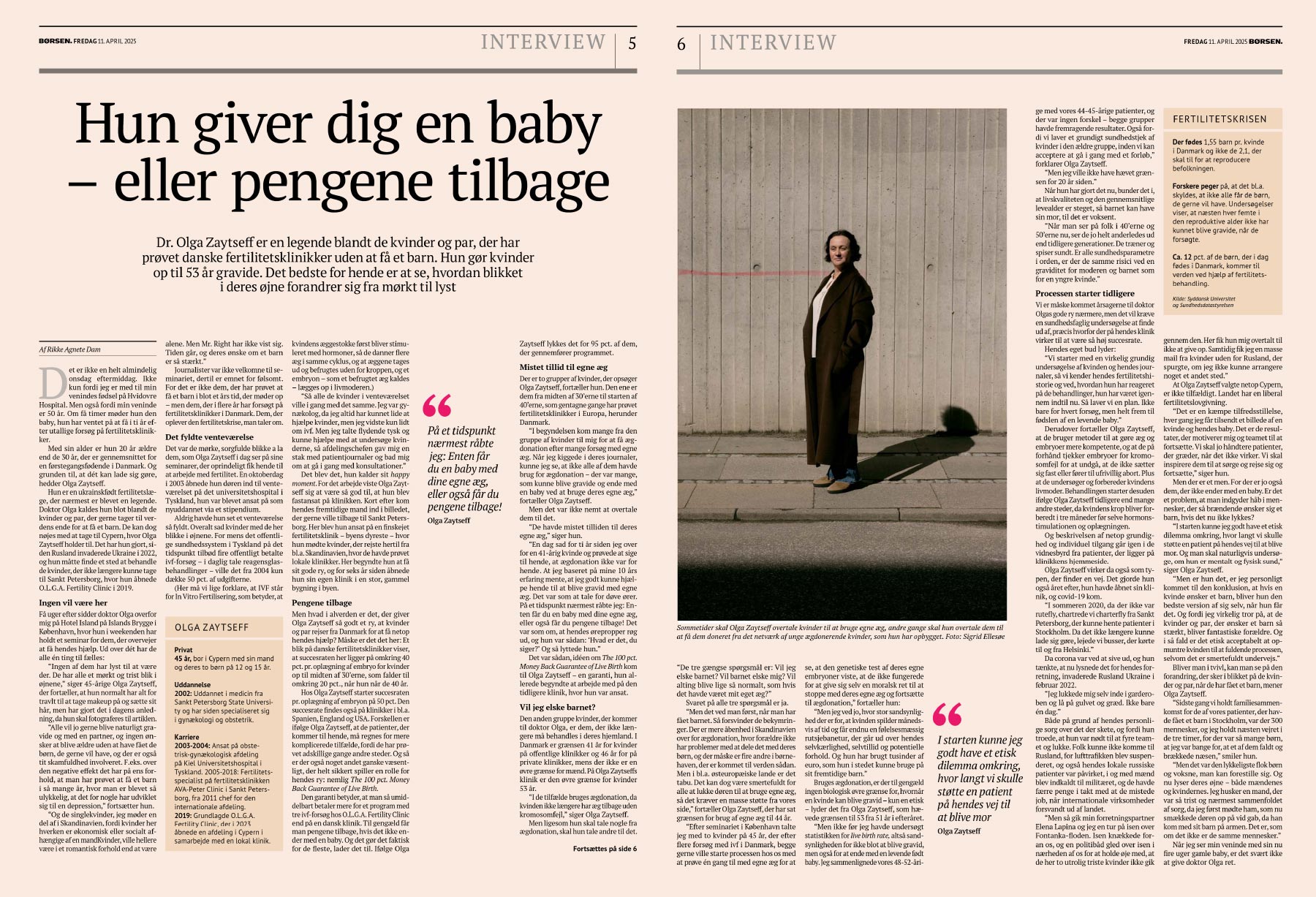
Dr. Olga Zaytseff is a legend among women and couples who have tried treatment at Danish fertility clinics without having a baby. She helps women up to the age of 53 to get pregnant. Her favourite part is watching the look in women’s eyes change from dark to light.
BØRSEN Weekend, Denmark | 11 April 2025 | By Rikke Agnete Dam | Photo: Sigrid Ellesøe | Translation: Anna Svarinskaya
Original version in Danish (PDF)
Olga Zaytseff
Private information
45 years old, lives in Cyprus with her husband and their two children aged 12 and 15.
Education
2002: Graduated in medicine from Saint Petersburg State University and has since specialized in gynaecology and obstetrics.
Career
2003-2004: employed at the Department of Obstetrics and Gynaecology at Kiel University Hospital in Germany.
2005-2018: Fertility specialist at the fertility clinic AVA-Peter Clinic in Saint Petersburg, from 2011 head of the international department.
2019: founded O.L.G.A. Fertility Clinic, which in 2023 opened a branch in Cyprus in cooperation with a local clinic.
It's not an ordinary Wednesday afternoon. Not only because I'm attending my friend's giving birth at Hvidovre Hospital. But also because my friend is 50 years old. In a few hours, she'll meet the baby she's been waiting to have for ten years after countless attempts at fertility clinics.
At her age, she is 20 years older than the average age of a first-time mother in Denmark, which is 30. And the reason this is possible is Olga Zaytseff.
She is a Ukrainian-born fertility doctor who has become something of a legend.
She is known as Dr. Olga to women and couples who want to go to the ends of the world to have a baby. However, they can just go to Cyprus, where Olga Zaytseff is based since Russia invaded Ukraine in 2022 as she had to find a place to treat women who could no longer go to St Petersburg, where she opened O.L.G.A. Fertility Clinic in 2019.
Nobody wants to be there
A few weeks later, Dr. Olga is sitting opposite me at the Hotel Island on Islands Brygge in Copenhagen, where this weekend she has held a seminar for those considering getting her help. Apart from that, they all have one thing in common: "None of them wants to be there. They all have a dark and sad look in their eyes," says 45-year-old Olga Zaytseff, who says she is usually too busy to put on make-up and do her hair, but has done so today as she is being photographed for the article.
"Everyone wants to get pregnant naturally and with a partner, and no one wants to grow older without having the children they want, and there is also often shame involved. For example, the negative effect on the relationship because of trying to have a child for so many years or being so unhappy that in some cases it has developed into depression," she continues.
"The single women I meet a lot of in Scandinavia, because women here are neither financially nor socially dependent on a man, would rather have a child in a romantic relationship than alone. But Mr Right hasn't shown up. Time passes and their desire for a child is so strong."
Journalists were not invited at the seminar, as the topic is too sensitive. Because it is not those who have been trying to have a child for just a year who show up — but those who have been trying for several years at fertility clinics in Denmark. We are talking about those who are experiencing the fertility crisis.
Crowded waiting room
It was the dark, sad looks that Olga Zaytseff sees today in her seminars that originally led her to work in fertility. One October day in 2003, she opened the door to the waiting room of the university hospital in Germany that she had joined as a recent graduate on a scholarship. She had never seen a waiting room so full. Everywhere there were women with these looks in their eyes. Because while the public health system in Germany at that time offered four publicly paid IVF attempts — commonly known as in vitro fertilisation — from 2004 it would only cover 50 percent of the costs.
(Here we should explain that IVF stands for In Vitro Fertilization, which means that the woman's ovaries are first stimulated with hormones so that they produce several eggs in the same cycle, and that the eggs are collected and fertilized outside the body, and an embryo — as a fertilized egg is called — is placed back in the uterus).
"So all the women in the waiting room wanted to start right away. I was a gynaecologist as I've always liked helping women, but I knew little about IVF. But I spoke fluent German and could help examine the women, so the head of the department gave me a stack of patient records and asked me to start consultations."
It was what she calls her happy moment. Olga Zaytseff proved to be so good at this work that she became a permanent employee at the clinic. Soon after, her future husband came into the picture, and he wanted to return to St Petersburg. Here she was employed at a Finnish-owned fertility clinic — the most expensive in the city — where she met women who had travelled here from Scandinavia and elsewhere, where they had tried their local clinics. It was here that she began to build her reputation, and six years ago, she opened her own clinic in a large, old building in the city.
Money back
But what on earth is it that gives Olga Zaytseff such a good reputation that women and couples travel from Denmark to get her help?
Maybe the answer is the following: a look at Danish fertility clinics shows that the success rate here is around 40% per embryo transfer for women who are up to their mid-30s, and it drops to around 20% when a woman reaches the age of 40.
For Olga Zaytseff, the success rate per embryo transfer starts at 50%. Such success rate is also found at clinics in countries such as Spain, the UK and the USA. The difference, according to Olga Zaytseff, is that the patients who come to her are considered to have more complicated medical cases because they have already tried several times elsewhere. And then there is also something else quite significant that certainly plays a role in her reputation: the 100 % Money Back Guarantee of Live Birth. This guarantee means that you pay more for a programme with three IVF cycles at the O.L.G.A. Fertility Clinic than at a Danish clinic. But in return, you get your money back if it doesn't result in a baby. And it actually does for most people, it seems. According to Olga Zaytseff, 95% of those who complete the programme succeed.
- At one point I almost shouted at her: Either you have a baby with your own eggs, or I'll give you your money back!
Olga Zaytseff
Lost confidence in own eggs
There are two groups of women who seek our help, she says. One is those in their mid-30s to early 40s who have repeatedly tried fertility clinics in Europe, including Denmark.
‘In the beginning, many of these women came to me for egg donation after many attempts with their own eggs. When I looked at their medical records, I could see that not all of them needed egg donation — there were many who could get pregnant and end up with a baby by using their own eggs,’ says Olga Zaytseff.
But it wasn't easy to persuade them to do it.
‘They had lost confidence in their own eggs,’ she says.
‘One day, ten years ago, I was sitting opposite a 41-year-old woman and tried to tell her that egg donation was not for her. That, based on 10 years of my experience, I thought I could help her get pregnant with her own eggs. It was like talking to deaf ears. At one point I was practically shouting at her: either you have a baby with your own eggs, or I'll give you your money back! It was like her earplugs popped out and she was like, ‘What are you saying?' And then she listened.’
That's how the idea of 100 % Money Back Guarantee of Live Birth came to Olga Zaytseff — a guarantee she had already started working with at the former clinic where she was employed.
Will I love the baby?
The second group of women who come to Dr Olga are those who are no longer allowed to be treated in their home country. In Denmark, the limit is 41 years for women in public clinics and 46 years for women in private clinics, while there is no upper upper limit for men. At Olga Zaytseff's clinic, the upper limit for women is 53 years.
‘In these cases, egg donation is used as the woman no longer has any eggs left without chromosomal defects,’ says Olga Zaytseff. But just as she has to talk some people out of egg donation, she has to talk others into it.
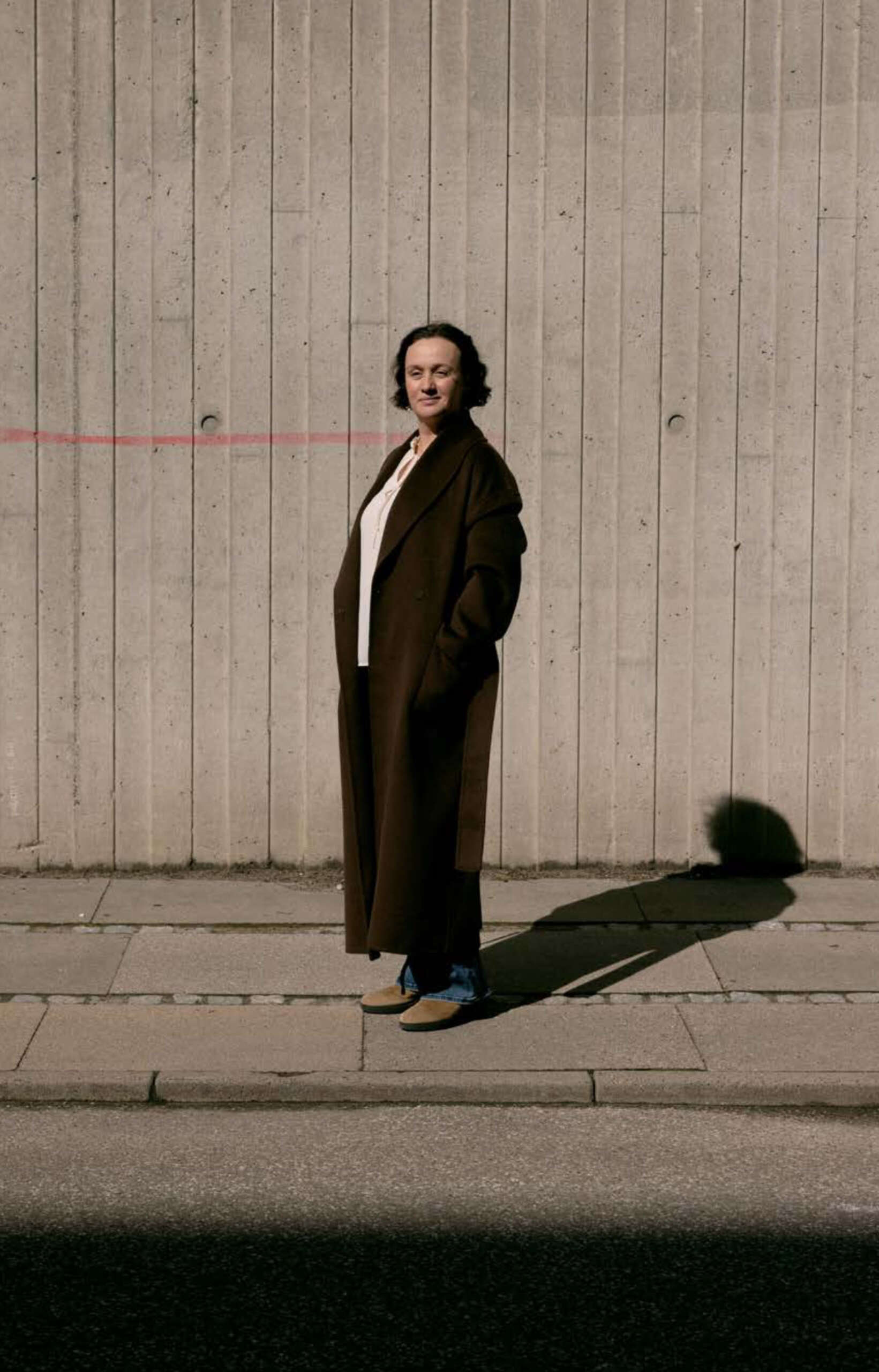
Sometimes Olga Zaytseff has to persuade women to use their own eggs, other times she has to persuade them to have them donated from the network of young egg donors she has built up. Photo: Sigrid Ellesøe
‘The three common questions are: will I love the child? Will the child love me? Will everything be as normal as if it had been with my own egg?’
The answer to all three questions is yes.
‘But you only know that when you have had the baby. Then those worries disappear. There is more openness in Scandinavia towards egg donation, here parents don't have a problem sharing it with their children, and there may be four others in the kindergarten who were born this way.
But in the Eastern European countries, among others, it is a taboo. However, it can be painful for everyone to close the door to using their own eggs, so it requires a lot of support from our side,’ says Olga Zaytseff, who has set the the age limit for using your own eggs at 44.
After the seminar in Copenhagen I spoke to two 45-year-old women who, after several IVF attempts in Denmark, both wanted to start the process with us by trying one more time with their own eggs to see that the genetic testing of their own embryos shows that it can’t work for them, all to give themselves the moral right to stop using their own eggs and proceed with egg donation,’ she says.
‘But I know how likely it is that the woman will waste months of time and go on another emotional rollercoaster that affects her self-love, self-confidence and potential relationship. And she will spend thousands of euros that she could instead be spending on her future child.’
If egg donation is used, however, there is no biological upper limit for when a woman can become pregnant — only an ethical one — according to Olga Zaytseff, who raised the age limit to 53 from 51 this autumn.
‘But not before I had analyzed the statistics for live birth rate, i.e. the probability of not only getting pregnant, but also the probability of ending up with a baby. I compared our 48-52 year old patients with our 44-45 year old patients, and there was no difference — both groups had excellent results. Also because we do a thorough health check for women in the older group before we can agree to start a programme,’ Olga Zaytseff explains.
‘But I wouldn't have raised the threshold 20 years ago.’ The reason she has done so now is because the quality of life and the average life expectancy have increased, so the children can have their mums until they're an adult.
‘When you look at people in their 40s and 50s now, they look completely different than the previous generations. They exercise and eat healthy. If all the health parameters are in order, there are the same pregnancy risks for the mother and the baby as for a younger woman.’
- In the beginning I could well have an ethical dilemma about how far we should support a patient on her path to becoming a mother
Olga Zaytseff
Process starts earlier
Fertility crisis
1.55 children are born per woman in Denmark and not the 2.1 needed to reproduce the population.
Researchers point out that this is partly because not everyone is having the children they want to have. Studies show that almost one in five people of reproductive age have been unable to conceive when they tried.
Approximately 12 per cent of the children born in Denmark today are born with the help of fertility treatment.
Source: University of Southern Denmark and the Danish Health Data Authority
We may be getting closer to the reasons for Dr. Olga's good reputation, but it will require a medical investigation to find out exactly why her clinic seems to have such a high success rate.
Her own suggestion is: ‘We start with a really thorough examination for a woman and her medical records, so we know her fertility history and how she has responded to the treatments she's been through so far. Then we make a plan. Not just for each attempt, but right up to the live birth.’
In addition to that, Olga Zaytseff explains, they use methods to make eggs and embryos more competent, and they check embryos for chromosomal defects in advance to prevent them from not implanting or leading to a miscarriage.
Plus they examine and prepare the woman's uterus. The treatment also starts, according to Olga Zaytseff, earlier as the woman's body is prepared during three months before the actual hormone stimulation and transfer happens.
And the description of this thoroughness and individualized approach is echoed in the testimonials from patients on the clinic's website.
Olga Zaytseff seems like the type of person who knows how to find a way. She did just that the year after she opened her clinic and COVID-19 arrived.
‘In the summer of 2020, when there were no scheduled flights, we arranged charter flights from St Petersburg to pick up patients in Stockholm. When that was no longer feasible, we hired buses that travelled to and from Helsinki.’
When the coronavirus was stepping back and she thought things were looking up for her business, Russia invaded Ukraine in February 2022.
‘I locked myself in the wardrobe and lay on the floor crying. Not just for one day.’
Both because of her personal grief over what happened and because she believed she had to sack the team and close down. People couldn't get to Russia because air traffic was suspended, and her local Russian patients were also affected because men were being drafted into the military, and they had less money as they were losing jobs because the international companies disappeared from the country.
But then my business partner Elena Lapina and I went for an ice walk across the Fontanka River. The ice broke in front of us and a police boat slid across the ice near us to keep an eye on the fact that these two incredibly sad women didn't walk through it. Here she persuaded me not to give up. At the same time, I got a lot of emails from women outside of Russia who asked if I could organize something somewhere else.’
That Olga Zaytseff chose Cyprus, is no coincidence. The country has liberal fertility laws.
‘It's a huge satisfaction, every time I get a picture of a woman and her baby. It's those results that motivate me and the team to keep going. We have to deal with patients who cry when it doesn't work, we have to inspire them to grieve and get up and keep going,’ she says.
But there is a but, because there are also those who don't end up with a baby. Is it a problem to instill hope in people who want a baby so badly when it doesn't work out?
‘In the beginning I could well have an ethical dilemma about how far we should support a patient on her path to becoming a mother. And of course you have to examine whether she is mentally and physically healthy,’ says Olga Zaytseff.
‘But if she is, I have personally come to the conclusion that if a woman wants a child, she will be the best version of herself when she gets it. And because I truly believe that women and couples who want a child so strongly will be amazing parents. And if that's the case, it's ethically acceptable to encourage a woman to complete the process, even if it's painful along the way.’
When in doubt, you can look at the change in the way women and couples look at each other after having a child, says Olga Zaytseff.
‘The last time we had a family gathering for our patients who live in Stockholm, there were 300 people, and I held my breath for almost three hours because there were so many children, I was afraid one of them was going to fall and break their nose,’ she smiles.
‘But it was the happiest bunch of kids and adults you could imagine. And now their eyes are shining — both the men's and the women’s. I remember one man who was so sad and almost folded up with grief when I first met him, who now slammed the door wide open when he entered the room with his child in his arms. It's like they're not the same people.’
When I see my friend with her now four-week-old baby, it's hard not to to agree with Dr. Olga.
Join Our Fertility Events
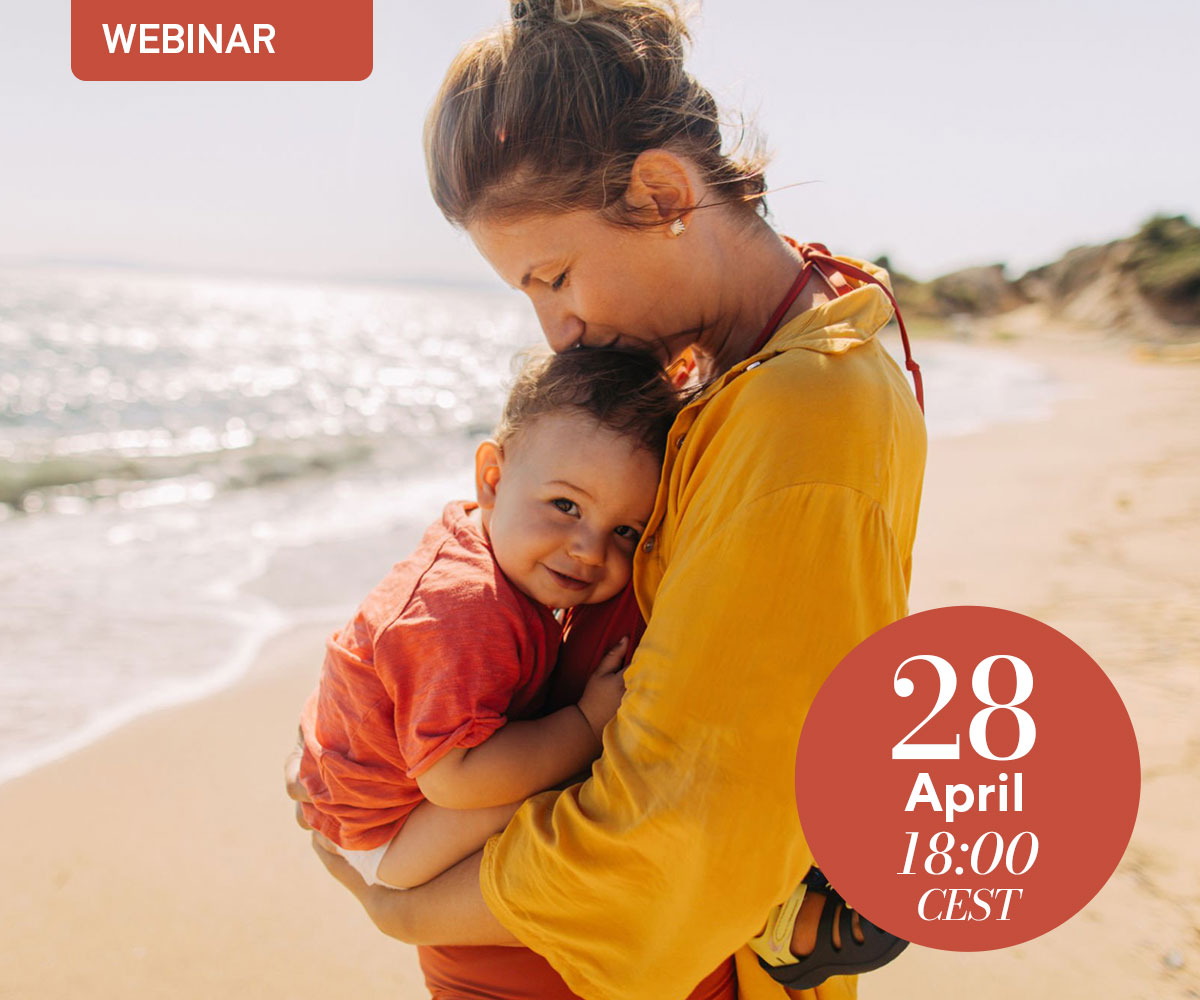
Becoming a mother in mature age is your personal choice and we are here to provide you with all the information, guidance and support that you need in this journey. We will discuss most common doubts and concerns, explain the chances, risks, and processes for IVF with own eggs and donor eggs, introduce Combined Package, specifically designed for women over 40, offering a great opportunity to have both IVF own eggs and egg donation options available for you at the same time being sure of the final success.
Find out more & Register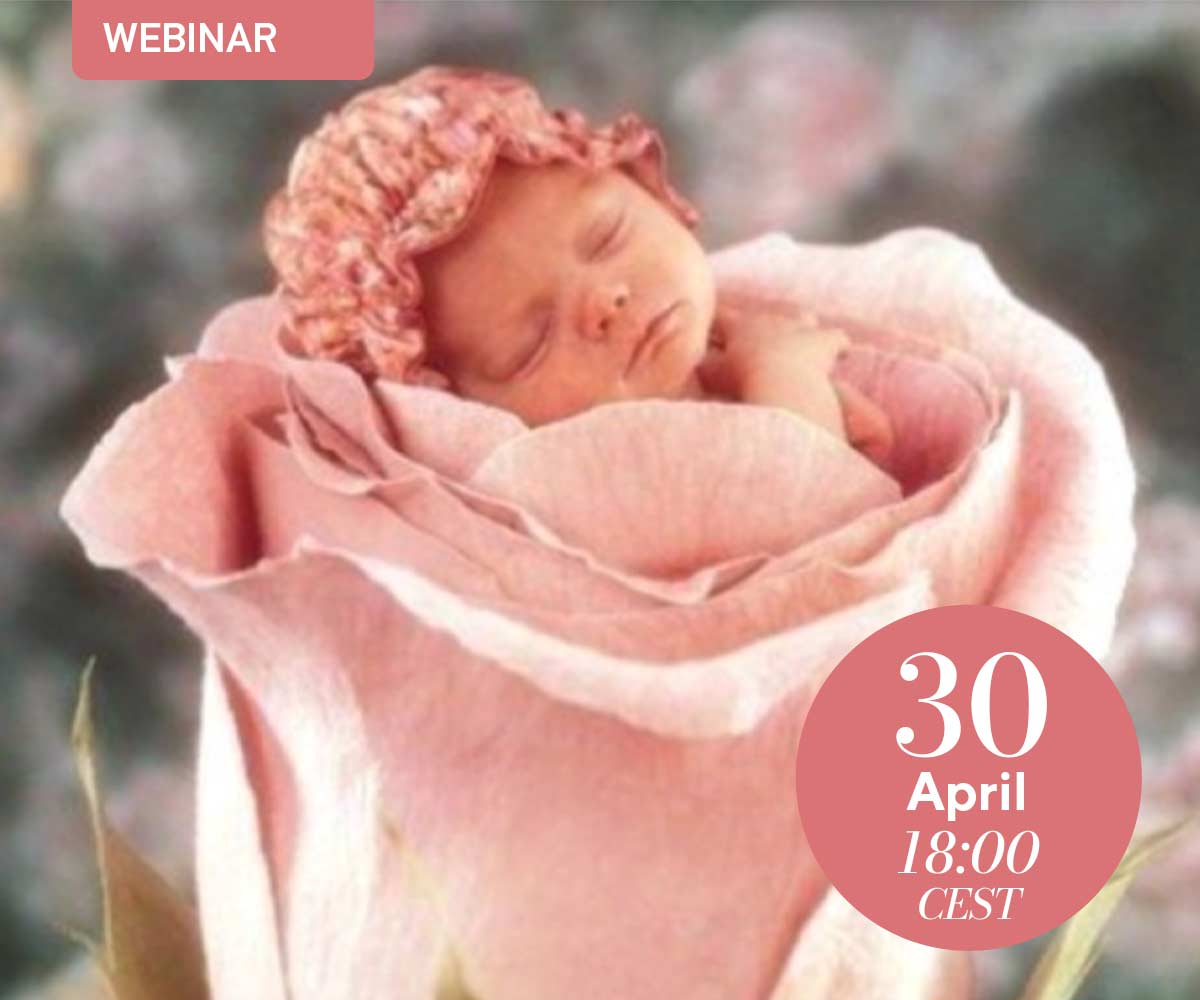
We will focus on diagnostics and individualized treatment of those inflammatory, hormonal, immune and other conditions that may impair implantation and lead to pregnancy losses. The goal is to increase live birth rates per each embryo transferred and reduce the potential number of embryo transfers till live birth by optimally preparing the uterus and the whole body for forthcoming embryo transfer.
Find out more & Register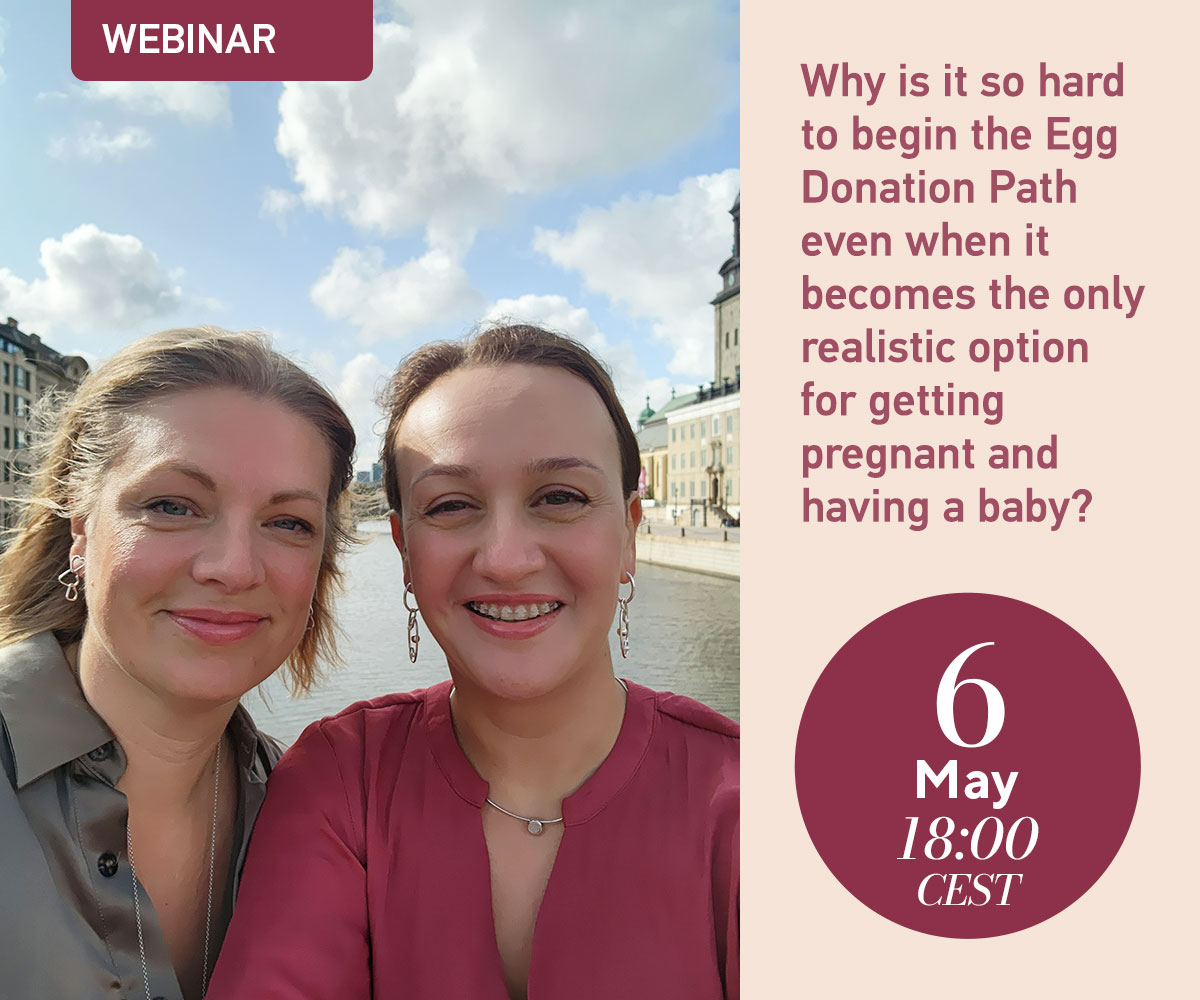
Egg donation is an easy and simple medical process with foreseeable successful results – healthy babies. The psychological aspect of accepting egg donation is significantly more complex, it needs information, dialog, support and time. Together with a brilliant therapist and our former patient Cilla Holm @jagvillhabarn, Dr. Olga is going to try to help you open the door to egg donation. Cilla became a mother using double donation in OLGA Clinic 7 years ago.
Find out more & Register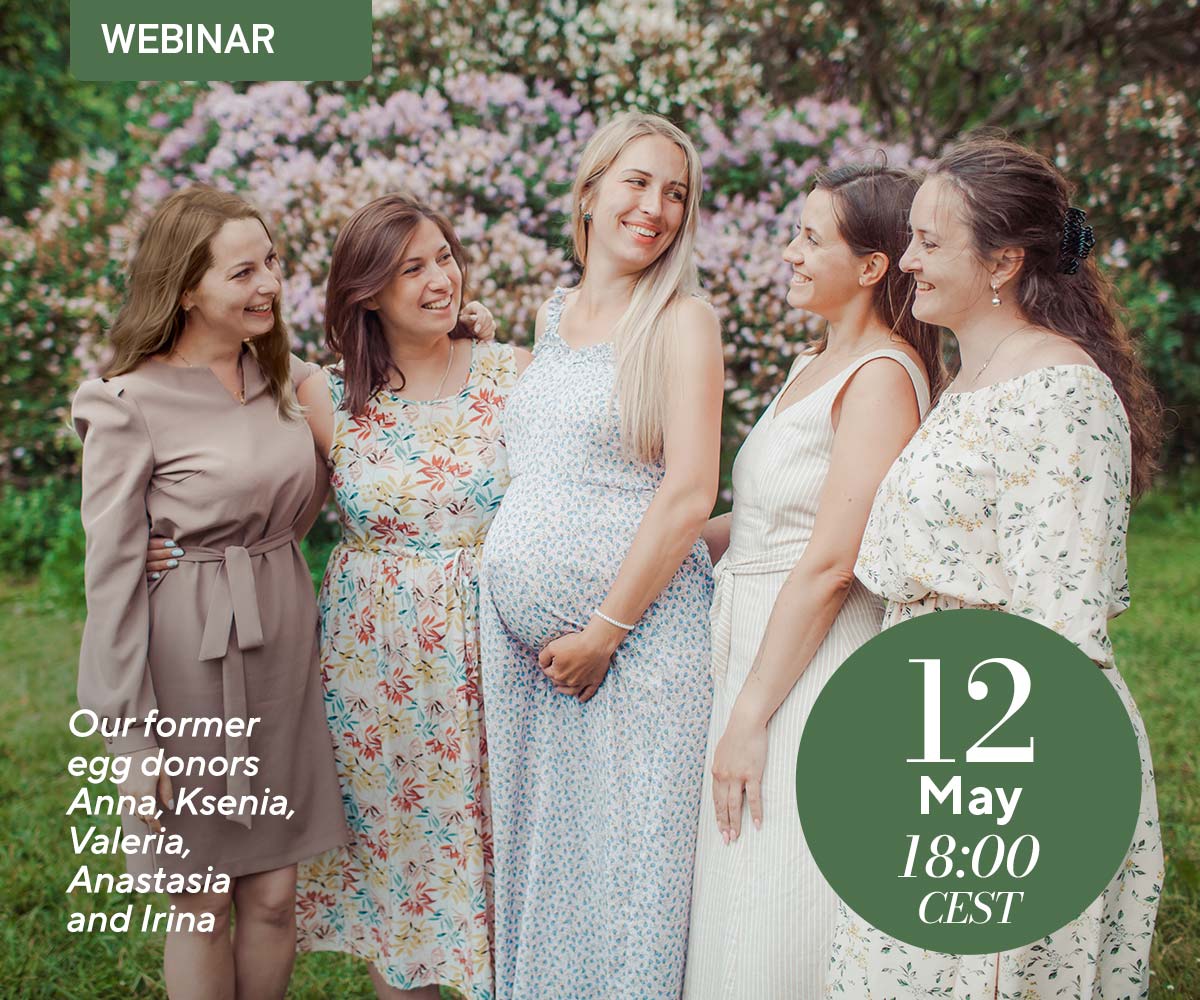
With participation of former egg donors who will share their stories and answer your questions.
Dr. Olga will join to explain the medical process for egg donors, introduce our Egg Donor Database and explain how to use it for your individualized egg donor choice.


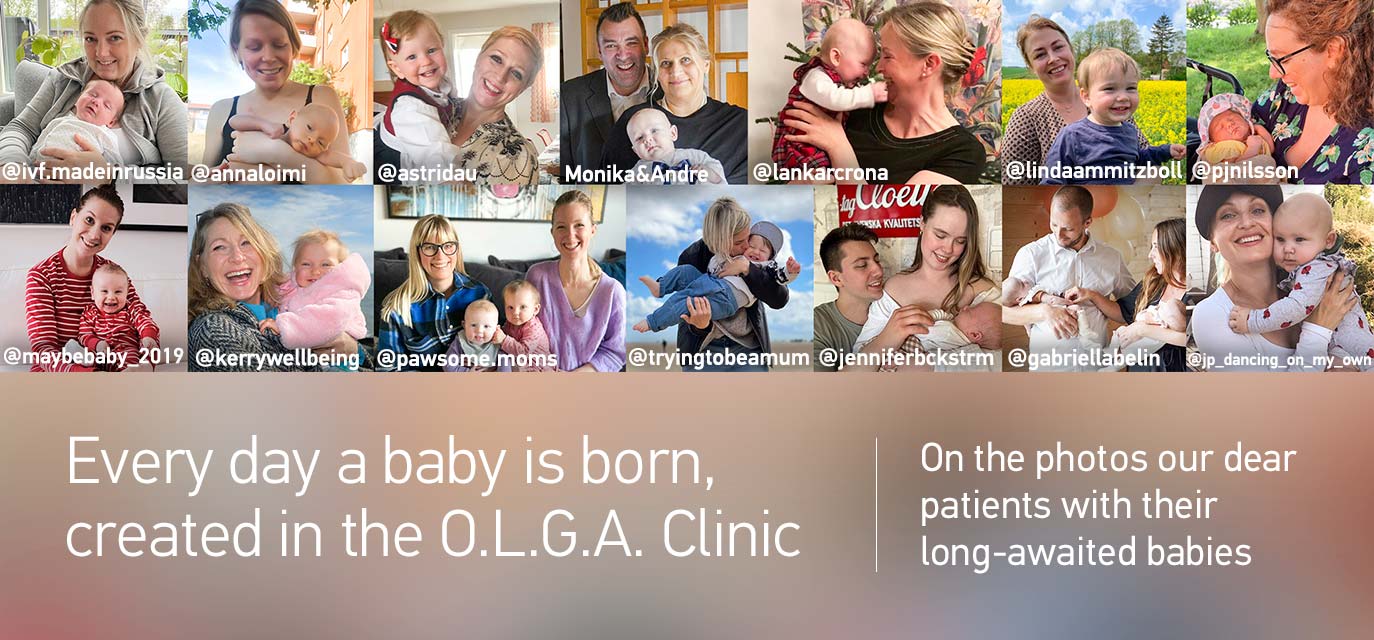

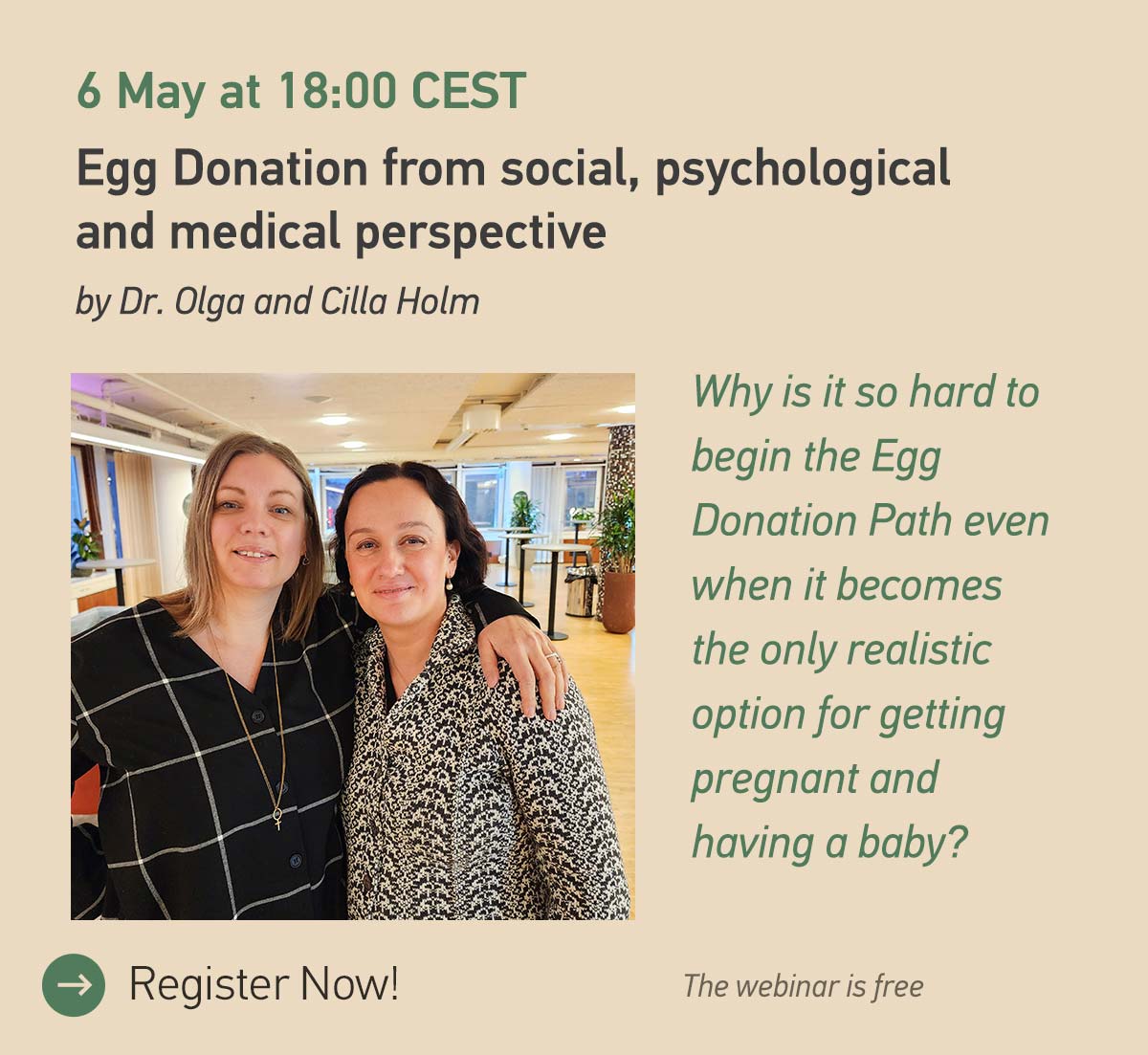

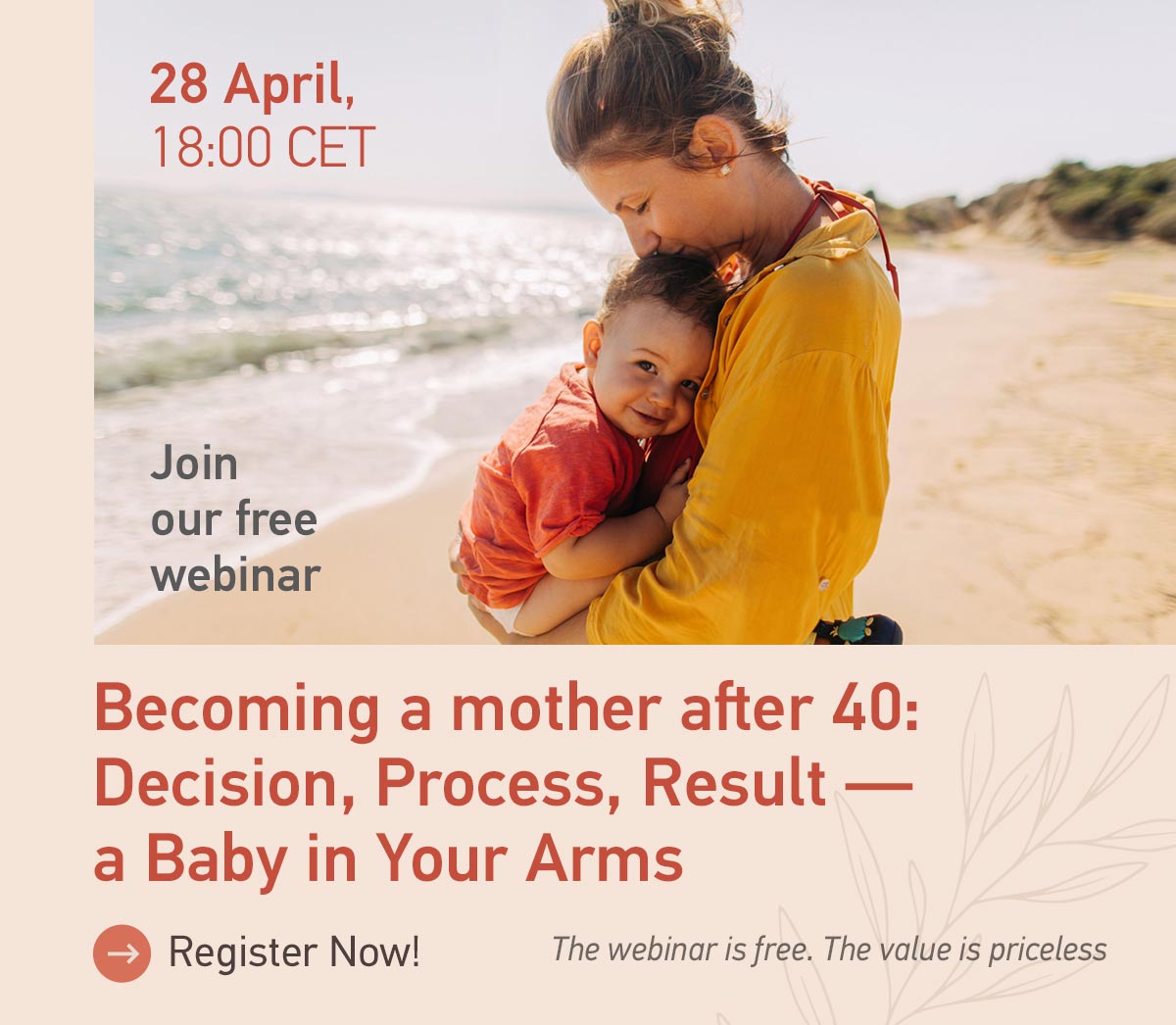

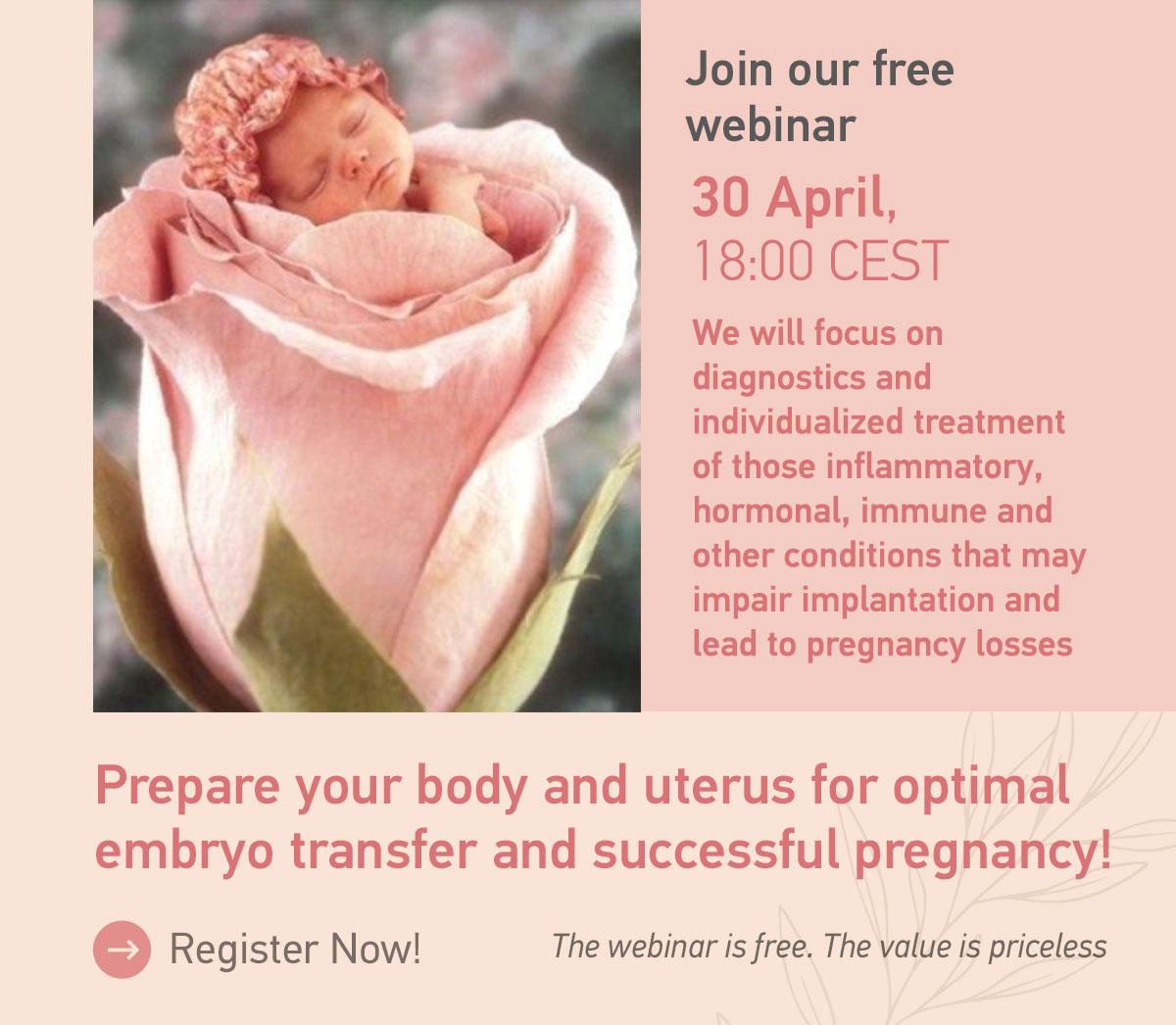

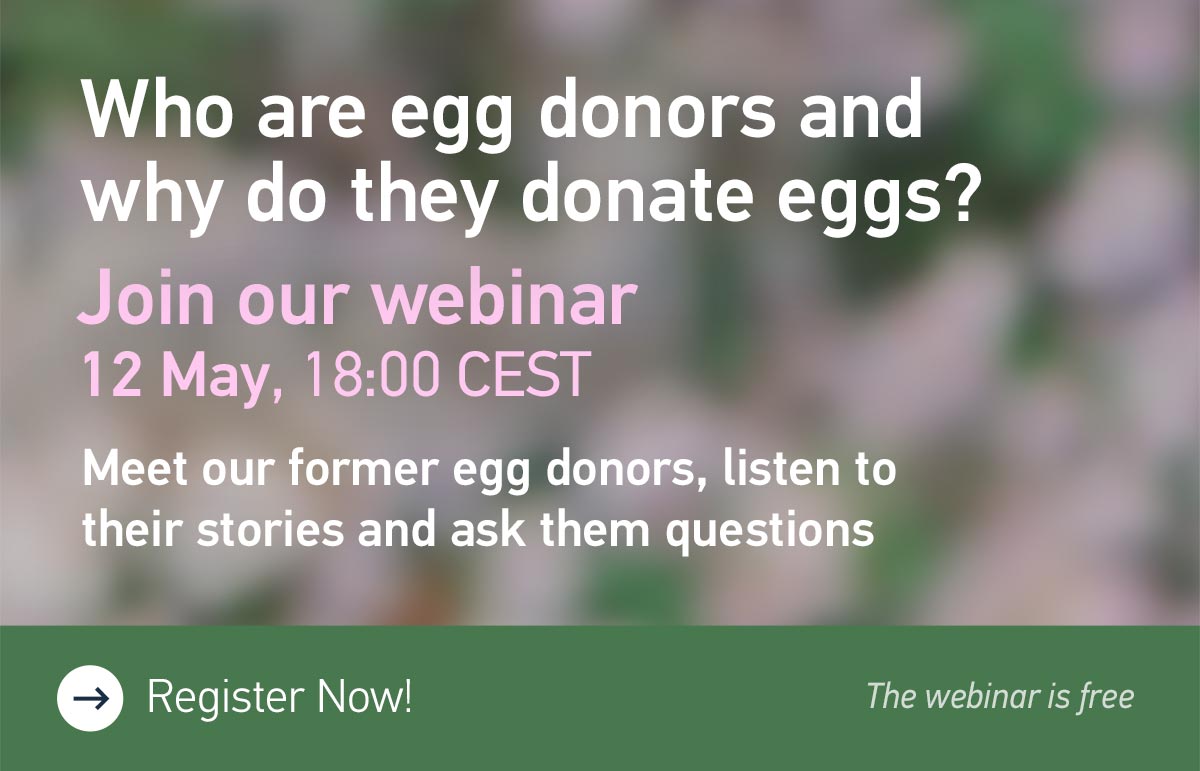
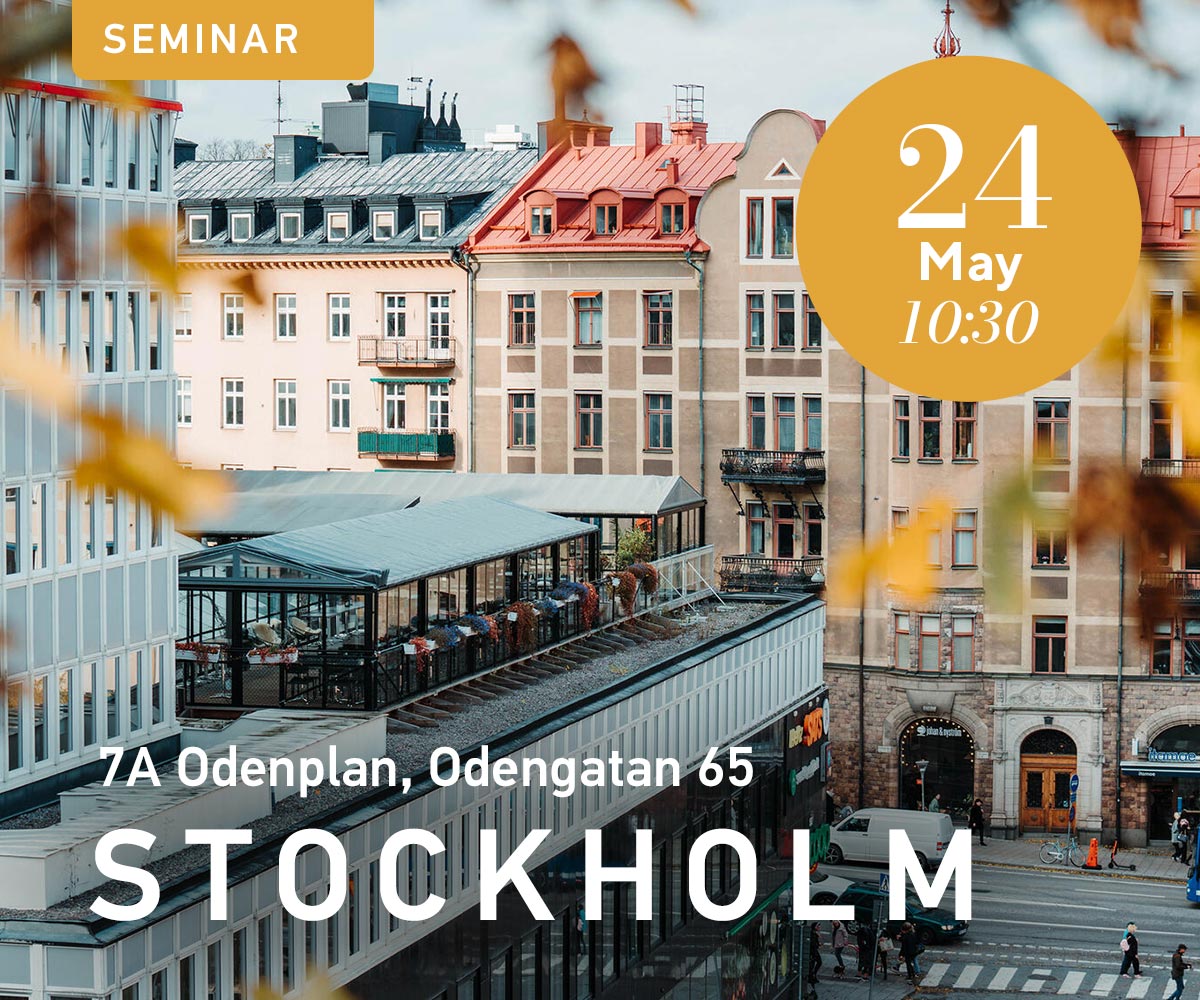


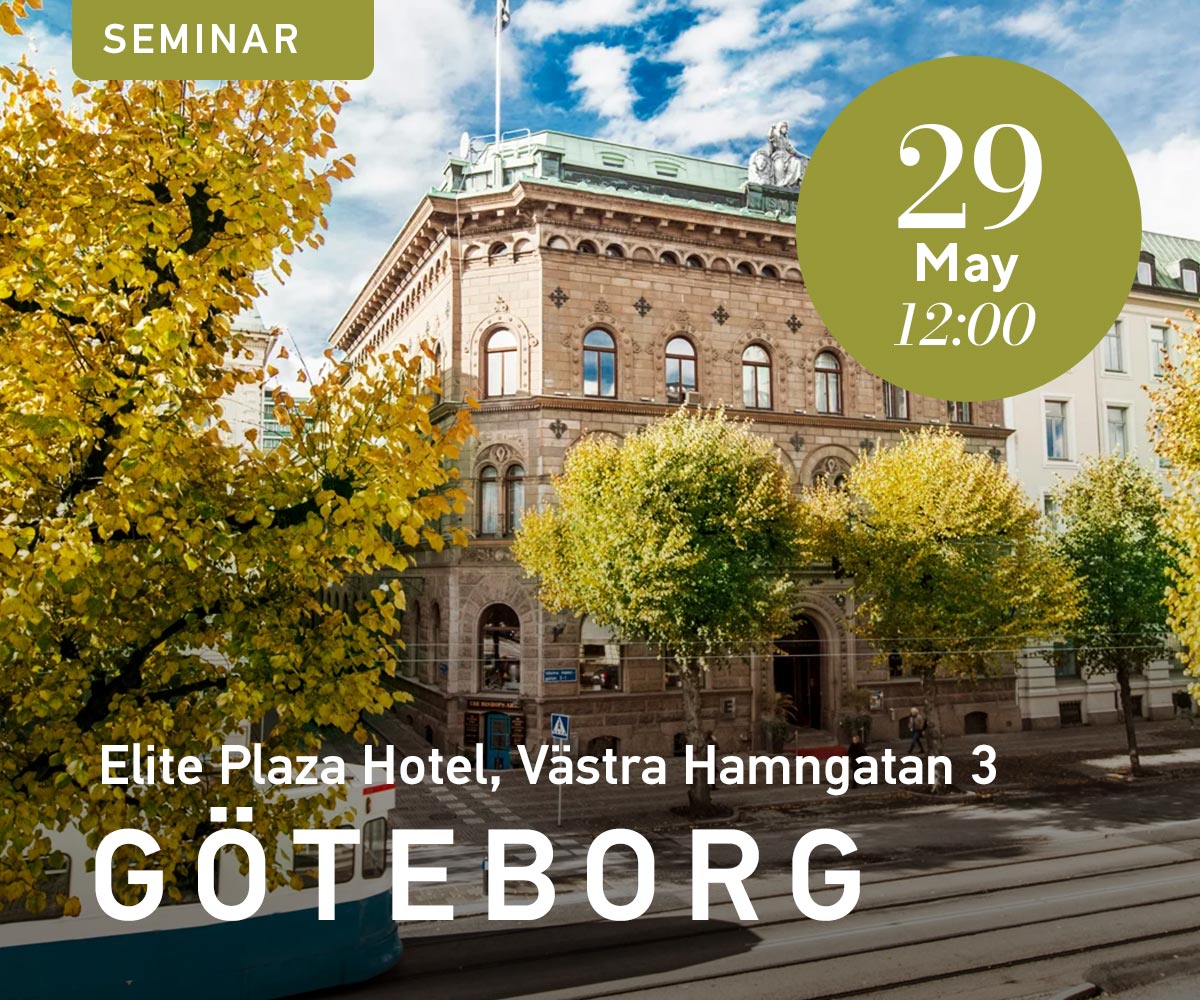








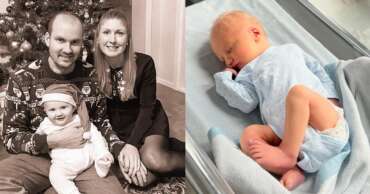
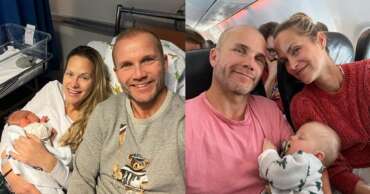
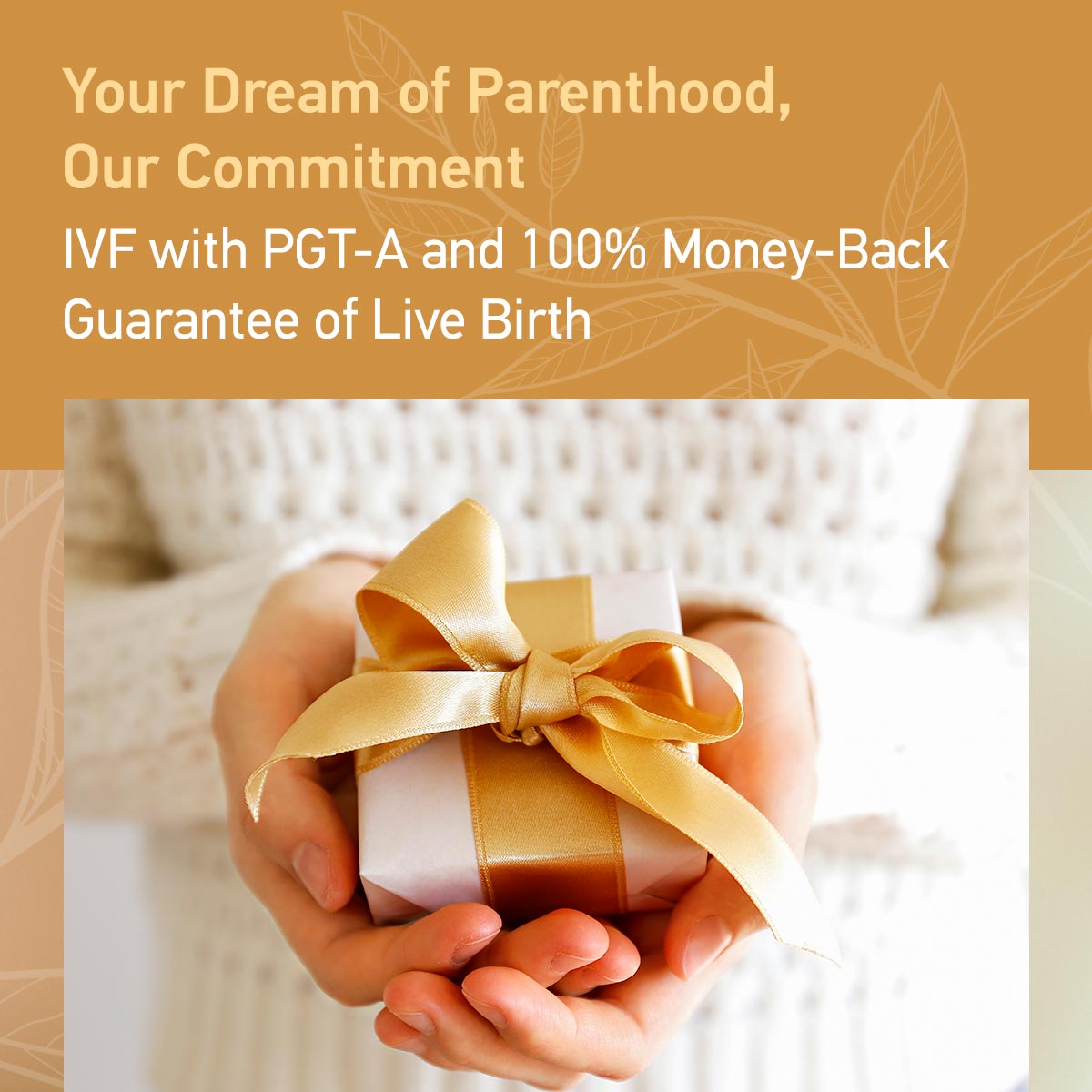

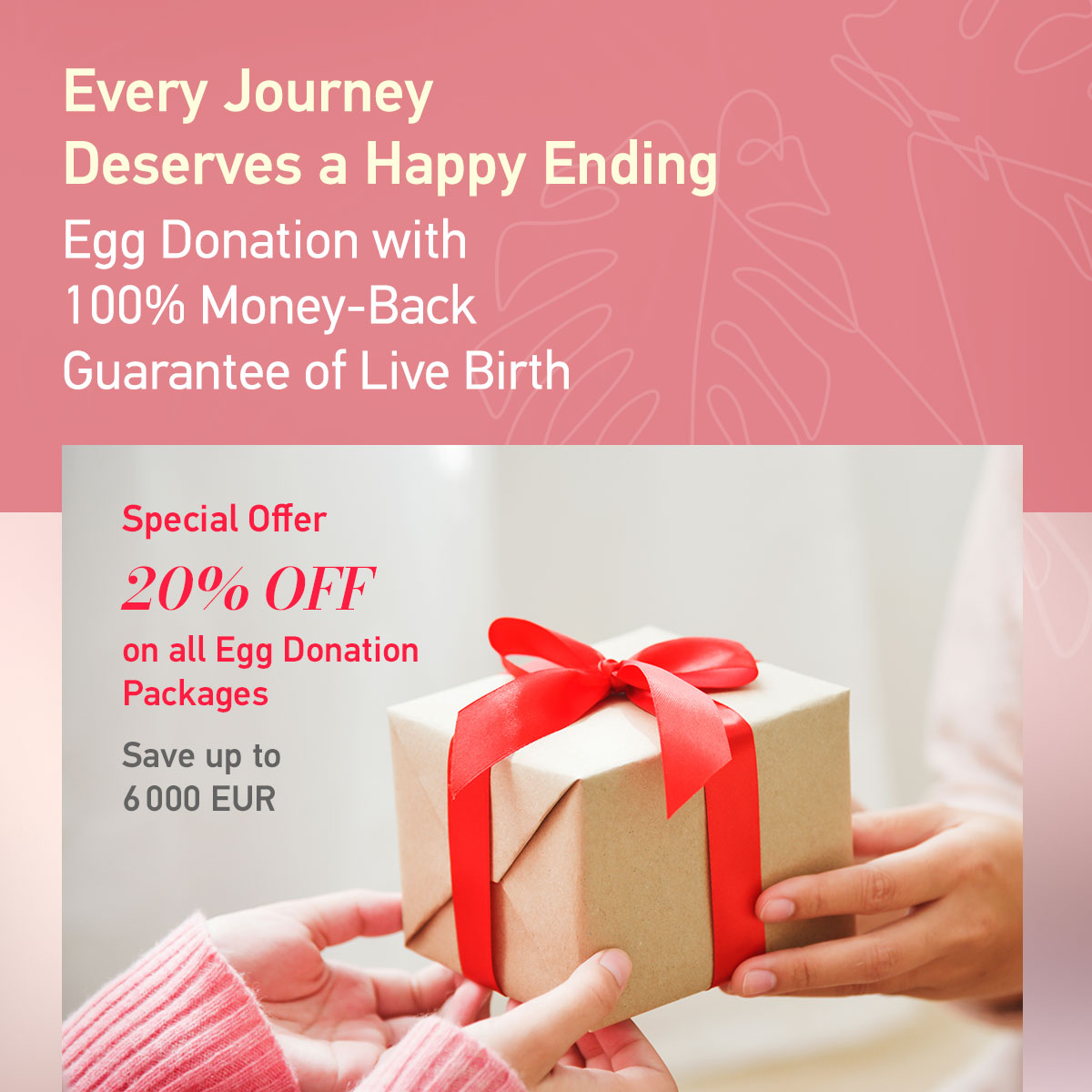
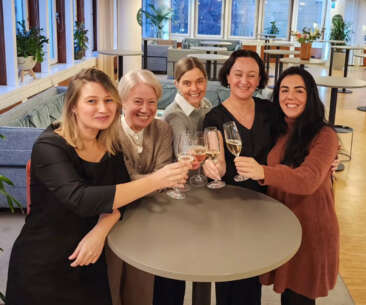
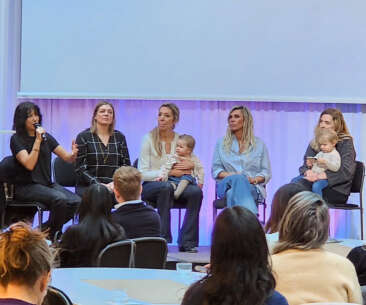
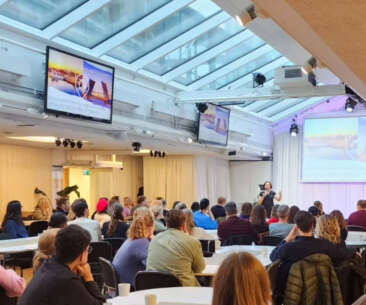



Comments are closed.